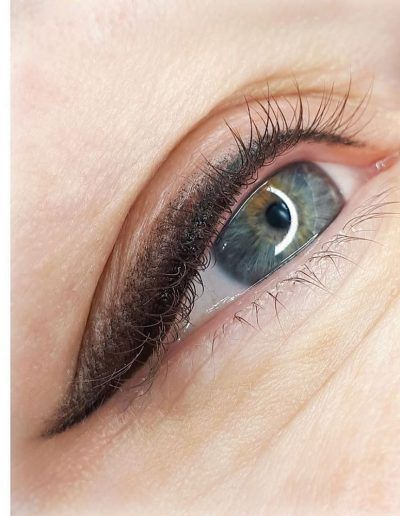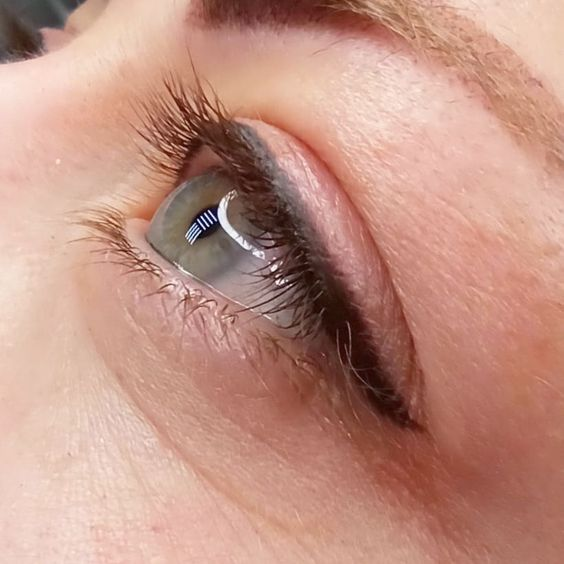When it comes to enhancing beauty, many seek the lasting effects of an eyeliner cosmetic tattoo. Brisbane, among other cities, has seen a rise in the popularity of this procedure, which promises the allure of perfect, smudge-free eyeliner around the clock. However, the main question for most interested clients is: How painful is an eyeliner tattoo? In this article, we delve into the true nature of the discomfort associated with eyeliner tattooing, exploring various factors that affect pain levels and understanding what you can expect before, during, and after the procedure.
What is an eyeliner tattoo?

An eyeliner tattoo, often referred to as permanent makeup, is a form of cosmetic tattooing where pigment is implanted along the lash line to create the appearance of eyeliner. Unlike the daily application of conventional eyeliner, this cosmetic tattoo offers a long-term solution for those looking to enhance the natural beauty of their eyes without the hassle of daily makeup routines. The procedure involves using fine needles to deposit the pigment, and it’s typically completed within one to two hours.
Factors influencing eyeliner tattoo pain levels

The sensation experienced during an eyeliner tattoo procedure is not one-size-fits-all. Various factors can influence the discomfort levels ranging from individual pain tolerance, the skill of the tattoo artist, and the techniques employed during the process. The quality of the ink, the type of equipment used, and even the psychological state of the client can play significant roles in determining how painful the experience will be.
Pain tolerance: a personal matter
Everyone has their unique threshold when it comes to pain, and what may be a minor irritant to one person could be quite painful to another. Eyelid skin is thin and highly sensitive, which can naturally increase the discomfort for some clients. Moreover, stress and anxiety can heighten sensations of pain, so coming into the appointment relaxed can make a significant difference in your experience.
The techniques and tools of the trade
A closer look at the instruments and methods used in tattooing can shed light on the pain levels one might expect. Advances in technology have led to finer needles and more precise equipment that can reduce the sensation of pain. Additionally, various tattooing methods can either alleviate the sharpness of the pain or, if done improperly, can exacerbate it.
The role of the tattoo artist
Selecting a highly skilled and experienced artist is crucial, not only for the final aesthetic result but also for managing pain. An adept artist with a gentle hand can significantly reduce the discomfort experienced during the procedure. Their skill in handling the tools and applying the pigment can make a substantial difference.
Pre-procedure precautions to reduce pain
There are steps you can take to minimize discomfort before ever sitting in the tattoo chair. Adequate preparation, such as getting a good night’s sleep and staying hydrated, can help ease the process. Moreover, discussing pain relief options with your artist, such as topical anesthetics, can be beneficial in managing pain.
Post-tattoo pain and care
After the procedure, it’s normal to experience some swelling, redness, and tenderness around the tattooed area. These symptoms are typically short-lived and can be soothed with cold compresses and over-the-counter pain relievers, as recommended by your artist or physician. Proper aftercare is essential in promoting a quick and uncomplicated healing process.
Potential complications and how to address them
While rare, complications such as infection, allergic reactions, or excessive swelling can occur. It’s important to monitor the healing area for any signs of these issues. If you experience intense or prolonged pain, or if any other concerning symptoms arise, it’s imperative to seek medical attention promptly.
Conclusion
To conclude, while the experience of pain is subjective and can vary greatly, there are several measures that can be taken to manage discomfort during an eyeliner tattoo procedure. With today’s advanced techniques and equipment, as well as the expertise of seasoned artists, the process is typically well-tolerated. Ultimately, many consider the fleeting discomfort of an eyeliner tattoo a worthwhile trade-off for the long-term convenience and beauty enhancement it provides.
FAQs
| Question | Answer |
|---|---|
| How does an eyeliner tattoo compare to the pain of a body tattoo? | Eyeliner tattoos are generally considered to be less painful than body tattoos due to the smaller area and finer tools. However, because the eye region is quite sensitive, some clients may experience more discomfort. |
| Can I take pain medication before getting an eyeliner tattoo? | Consult with your tattoo artist and healthcare provider first; certain pain relievers can increase bleeding, which may not be conducive to the procedure. |
| How long does eyeliner tattoo pain last after the procedure? | While most discomfort subsides within a few hours post-procedure, mild tenderness can linger for a couple of days. If pain persists or intensifies, seek medical advice. |
| Are there any techniques to reduce pain during the procedure? | Topical anesthetics and relaxation techniques can mitigate pain during the process. Speak with your artist about the best options for you. |
| Is the pain from an eyeliner tattoo worth it? | Many clients find the brief pain worth the long-term benefits of having a permanent, hassle-free eyeliner, though individual experiences and satisfaction levels may vary. |
